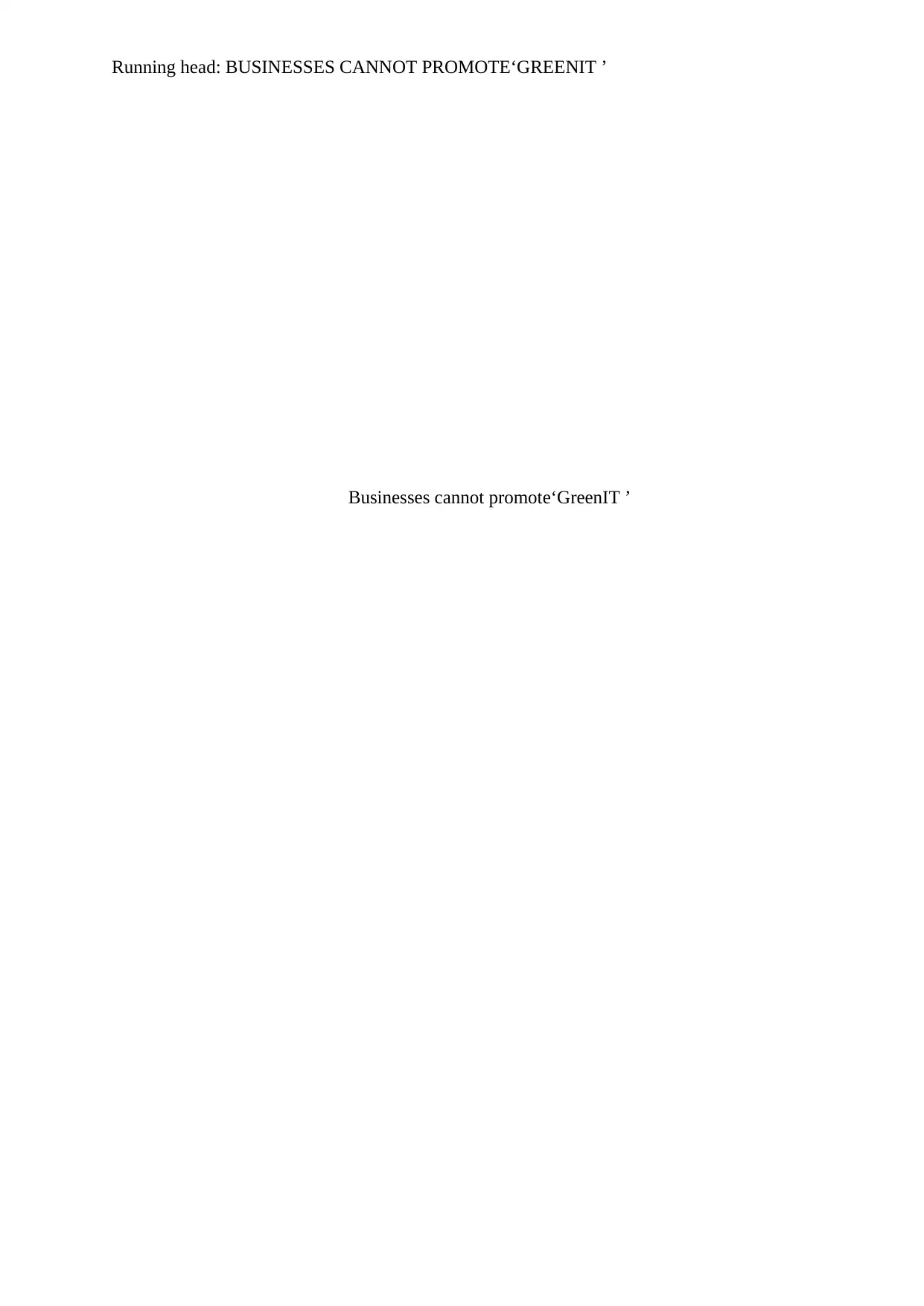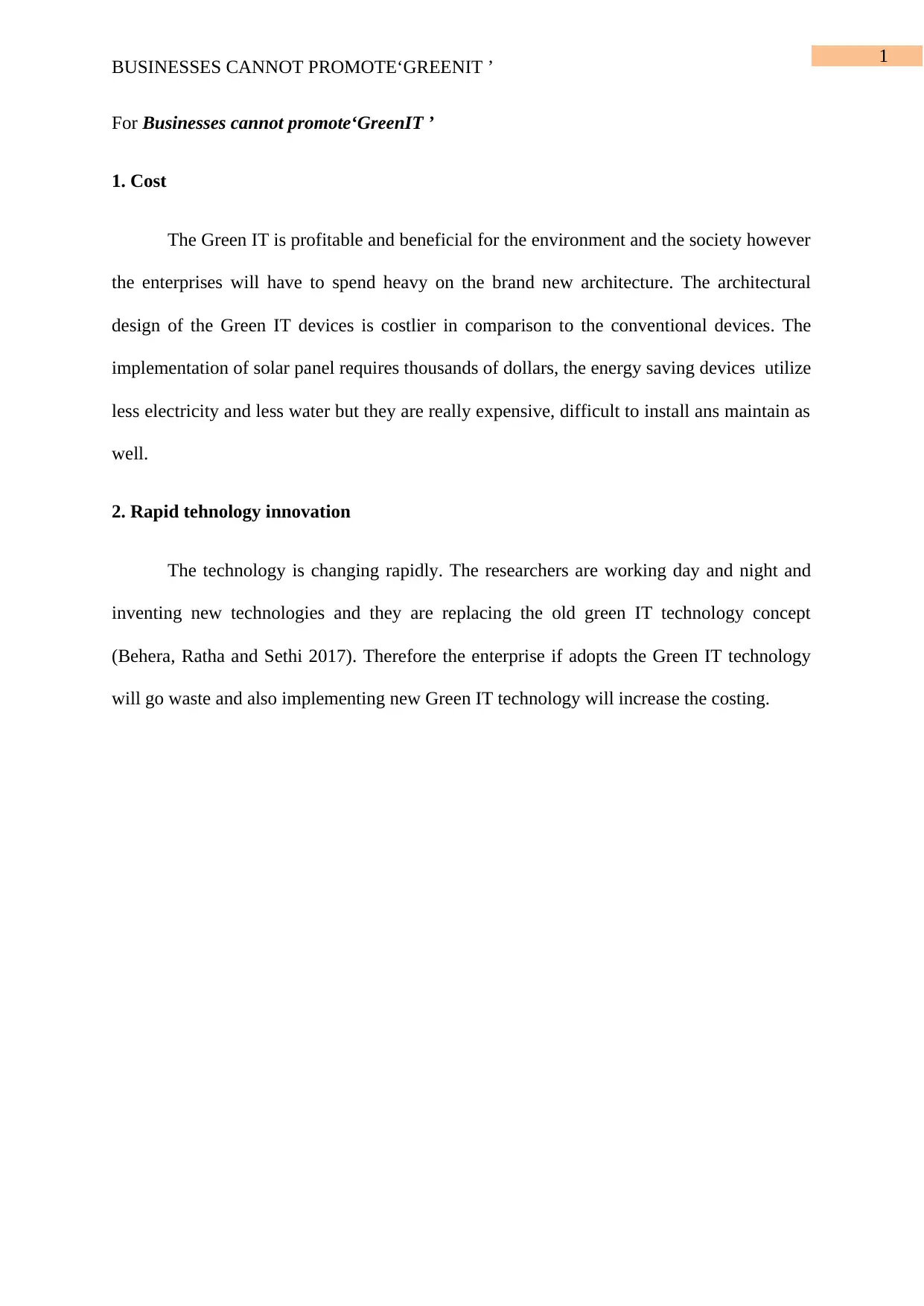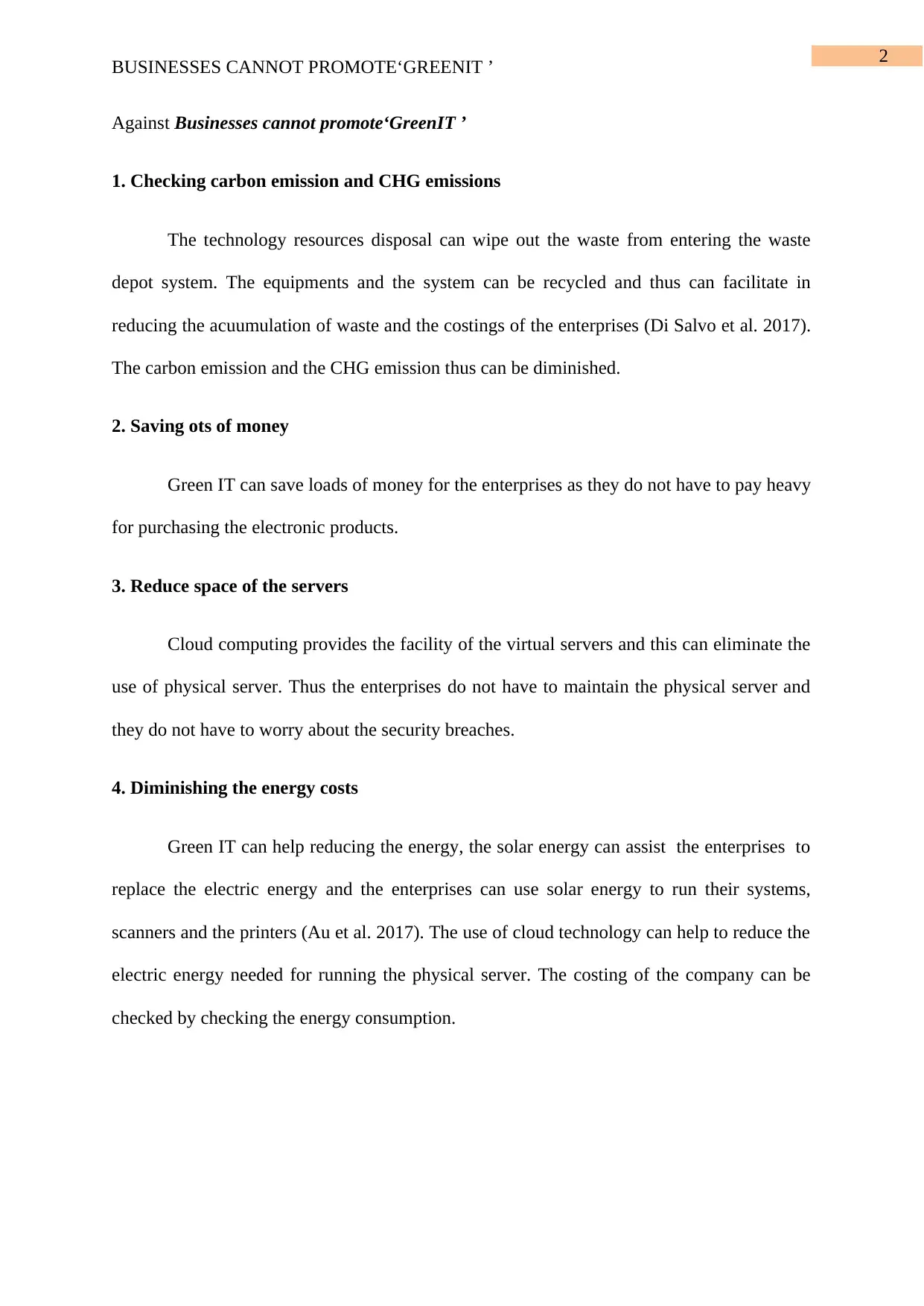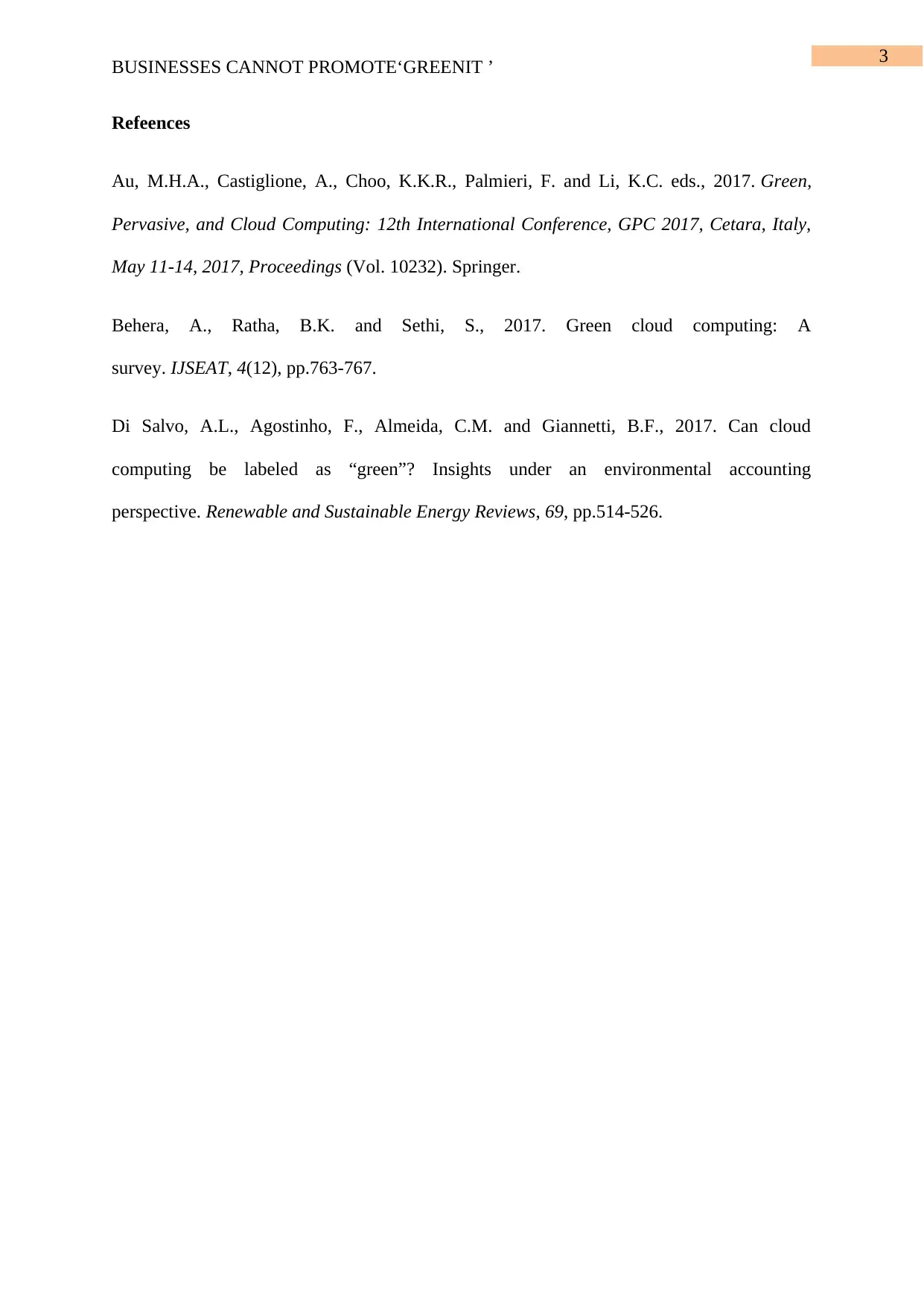Green IT: A Comprehensive Cost-Benefit Analysis for Businesses
VerifiedAdded on 2020/05/11
|4
|549
|132
Report
AI Summary
This report provides a comprehensive analysis of the costs and benefits associated with implementing Green IT solutions for businesses. It examines the financial implications, including the initial investment in new technologies and the potential for long-term cost savings through energy efficiency and reduced waste. The report also explores the environmental advantages, such as decreased carbon emissions and the promotion of sustainable practices. Furthermore, the report discusses the challenges of rapidly changing technology and the need for businesses to consider the long-term viability of Green IT investments. It highlights specific benefits like reduced server space through cloud computing and the potential to diminish energy costs by utilizing solar energy and cloud technology. The report provides a balanced perspective, considering both the economic and environmental aspects of Green IT adoption.
1 out of 4











![[object Object]](/_next/static/media/star-bottom.7253800d.svg)